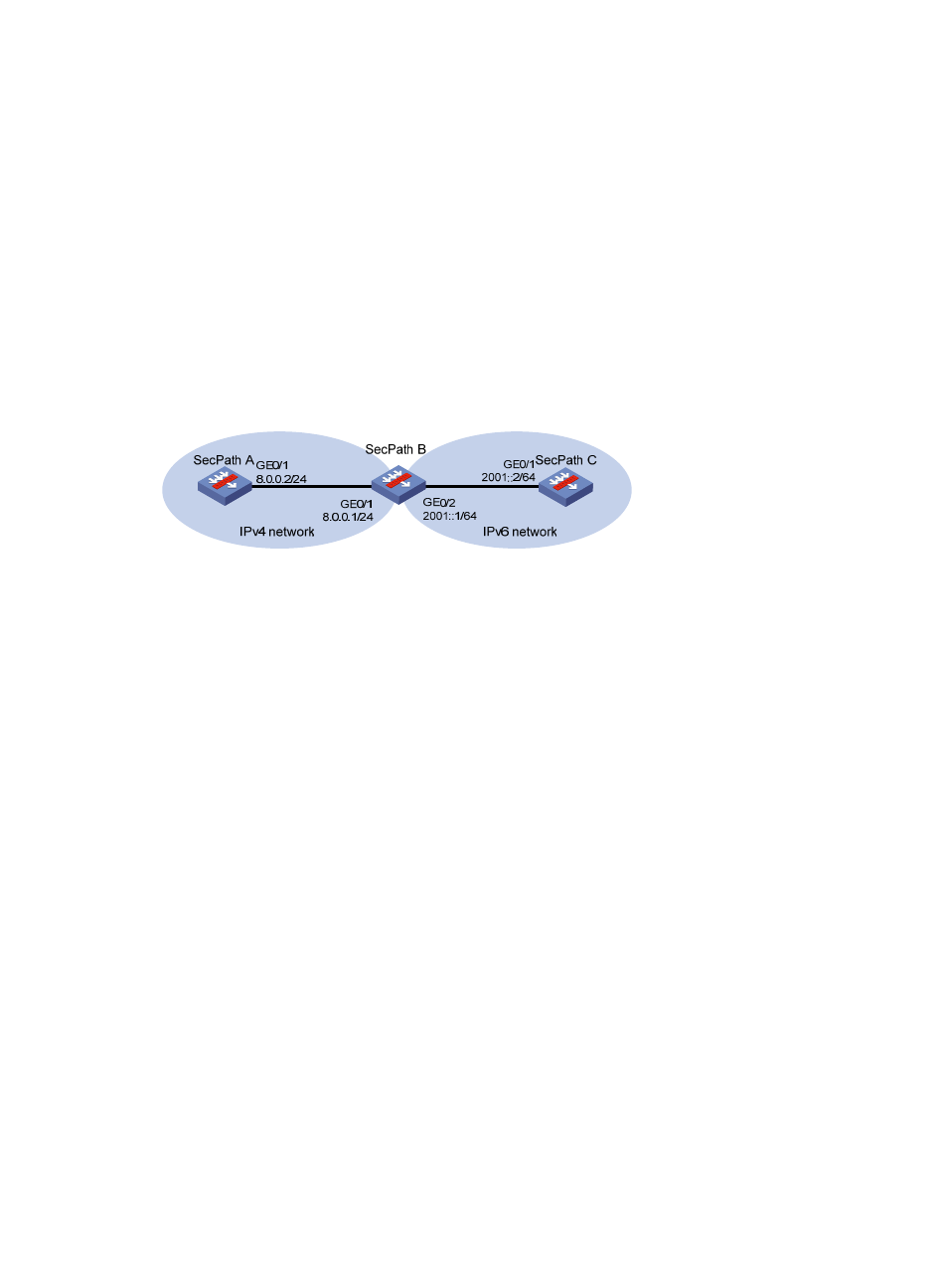Nat-pt configuration examples, Configuring dynamic mapping on the ipv6 side, Network requirements – H3C Technologies H3C SecPath F1000-E User Manual
Page 48: Configuring secpath b (nat-pt device), Configuring secpath a on the ipv4 side, Configuring secpath c on the ipv6 side

41
NAT-PT configuration examples
Configuring dynamic mapping on the IPv6 side
Network requirements
As shown in
, SecPath C with IPv6 address 2001::2/64 on an IPv6 network wants to access
SecPath A with IPv4 address 8.0.0.2/24 on an IPv4 network, whereas SecPath A cannot actively access
SecPath C.
To meet the preceding requirements, you need to configure SecPath B that is deployed between the IPv4
network and IPv6 network as a NAT-PT device, and configure dynamic mapping policies on the IPv6 side
on SecPath B so that IPv6 hosts can access IPv4 hosts but IPv4 hosts cannot access IPv6 hosts.
Figure 31 Network diagram
Configuring SecPath B (NAT-PT device)
# Configure interface addresses and enable NAT-PT on the interfaces.
[SecPathB] ipv6
[SecPathB] interface GigabitEthernet 0/1
[SecPathB-GigabitEthernet0/1] ip address 8.0.0.1 255.255.255.0
[SecPathB-GigabitEthernet0/1] natpt enable
[SecPathB-GigabitEthernet0/1] quit
[SecPathB] interface GigabitEthernet 0/2
[SecPathB-GigabitEthernet0/2] ipv6 address 2001::1/64
[SecPathB-GigabitEthernet0/2] natpt enable
[SecPathB-GigabitEthernet0/2] quit
# Configure a NAT-PT prefix.
[SecPathB] natpt prefix 3001::
# Configure a NAT-PT address pool.
[SecPathB] natpt address-group 1 9.0.0.10 9.0.0.19
# Associate the prefix with the address pool for IPv6 hosts accessing IPv4 hosts.
[SecPathB] natpt v6bound dynamic prefix 3001:: address-group 1
Configuring SecPath A on the IPv4 side
# Configure a static route to subnet 9.0.0.0/24.
[SecPathA] ip route-static 9.0.0.0 24 8.0.0.1
Configuring SecPath C on the IPv6 side
# Enable IPv6.
